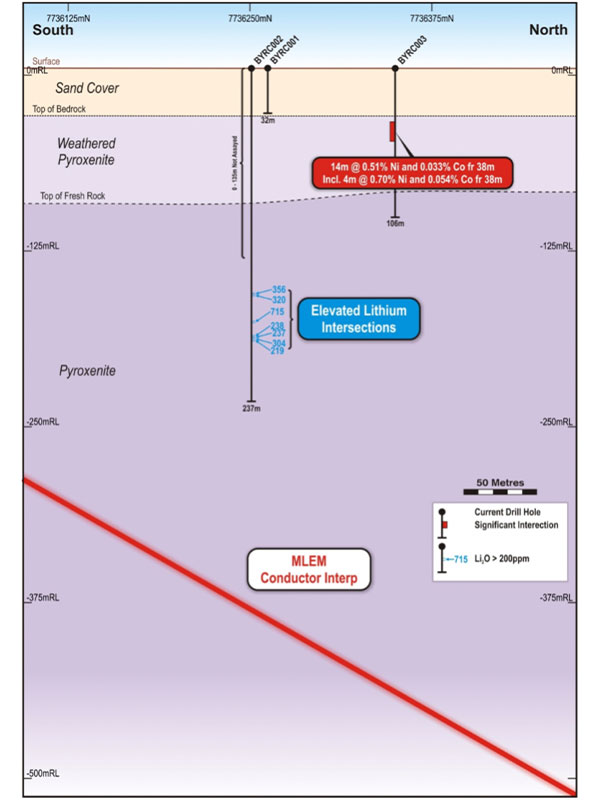Something could be lurking underneath cover at Golden State’s Yule project

Pic: Bloomberg Creative / Bloomberg Creative Photos via Getty Images
Special Report: Golden State is dialling in on a large, moderate conductance bedrock conductor at the virtually untouched Yule project, just a stone’s throw from Port Hedland in WA.
Golden State Mining’s (ASX:GSM) 434sqkm Yule Project contains some compelling gold, base metal and rare earth element target areas.
The ground, just ~30km from Port Hedland, was pegged in the mid-2000s by famous prospecting geologist Graham Hutton.
Hutton was associated with many large base metals, gold, iron ore and diamond discoveries during his lifetime.
In fact, he pegged the leases that underpinned the 2004 float of Sandfire Resources (ASX:SFR), which led to the eventual discovery of the world class DeGrussa copper-gold deposit.
But Hutton passed away in 2007 soon after the Yule project was vended into an exploration company; there it languished for the next decade or so.
Until Golden State chairman Damien Kelly, who worked with Hutton back in the day, picked up the tenements himself.
“When I approached Damien about the potential float of Golden State Mining [in 2018] he’d literally just picked up those tenements and was wondering what to do with them,” managing director Michael Moore told Stockhead.
“That’s how they found their way into Golden State Mining, quite fortuitously.”
What’s so good about Yule?
Just check out this location:

One of the main reasons Yule wasn’t explored effectively is the 5m-70m layer of cover that effectively ‘hides’ the underlying geology.
There’s hardly any outcropping rock, which is often used to pinpoint the location of mineral deposits deeper down. Despite the lack of ‘signposts’, the underlying geology at Yule is compelling, Moore says.
“There’s no outcrop — so for your average wandering geologist there wasn’t a lot for them to see,” he says.
“Ultimately, we had to rely on geophysical methods to find our targets.”
Earlier this year, Golden State identified 17 targets in that particular area using historic geophysical data.
Of these, the Balla Yule prospect — a large, 4.2 x 1.8 km ‘dome’ feature — is the most compelling.
Today, Golden State announced that moving loop electromagnetics has successfully identified a coherent bedrock anomaly that has been modelled as a large (~750 m x 900 m), moderate conductance ‘plate’ at Balla Yule.
This conductor happens to sit right underneath historic low-grade nickel, lithium and cobalt drilling results.

“Balla Yule was originally drilled for ferrovanadium – that’s what previous explorers were targeting – and in a number of drill holes they hit some elevated nickel numbers,” Moore says.
“But the nickel was dismissed for being potentially lateritic, so it was never followed up.
“The work that we have done so far suggests that that is not the case – it’s obvious to us that these are nickel sulphides.”
Nickel is usually found in two main ore types – sulphide or laterite.
Sulphides are much cheaper and easier to turn into battery grade nickel sulphate than nickel laterites and fetch a higher price.
Supply of nickel sulphides is also declining because of a lack of new discoveries, all while demand continues to climb.
For Golden State, the next step is to do some ground-based EM to further refine what they have found at Balla Yule.
“The conductor itself is going to require some more work,” Moore says.
“We are doing fixed loop survey ASAP to dial in tighter on this target. After that, we will hopefully put some drill holes into it.”
This story was developed in collaboration with Golden State Mining, a Stockhead advertiser at the time of publishing.
This story does not constitute financial product advice. You should consider obtaining independent advice before making any financial decisions.
UNLOCK INSIGHTS
Discover the untold stories of emerging ASX stocks.
Daily news and expert analysis, it's free to subscribe.
By proceeding, you confirm you understand that we handle personal information in accordance with our Privacy Policy.








